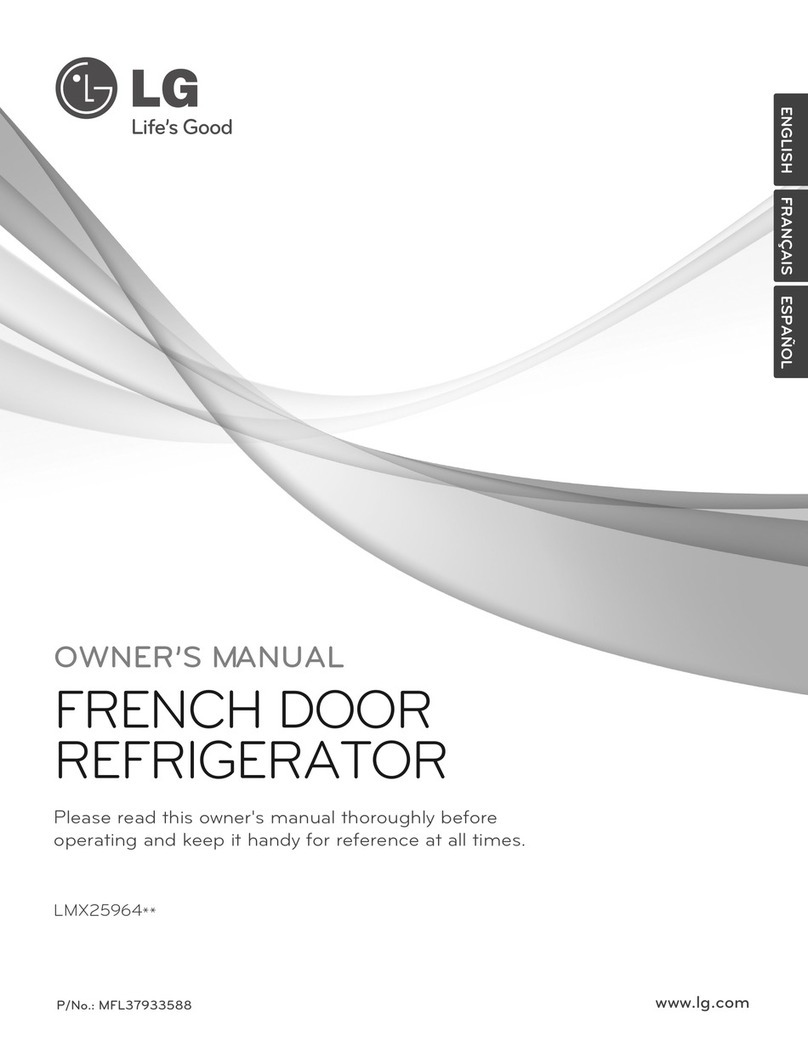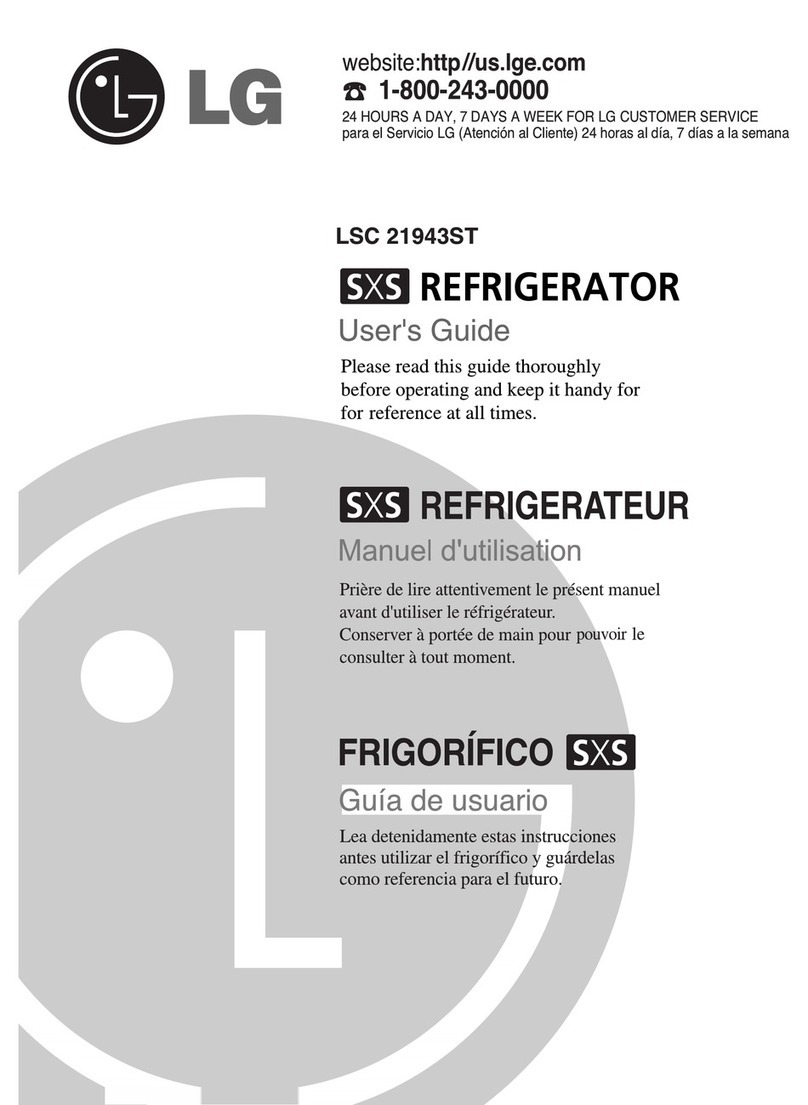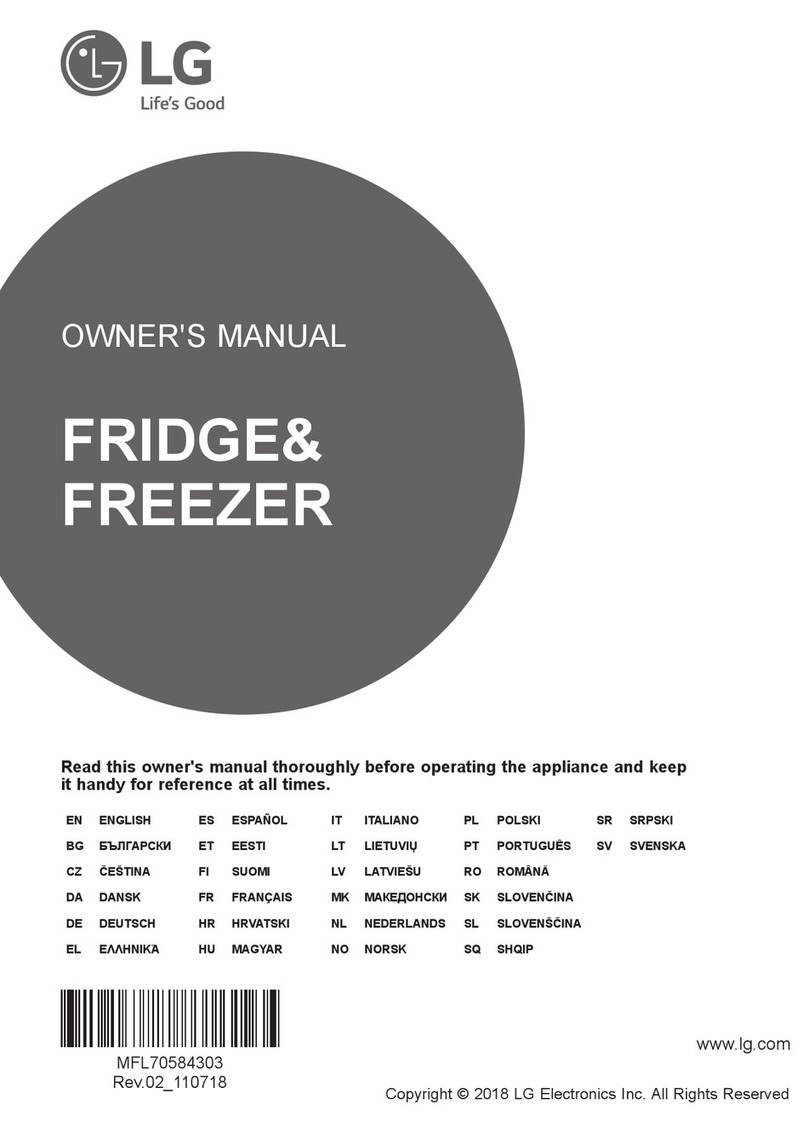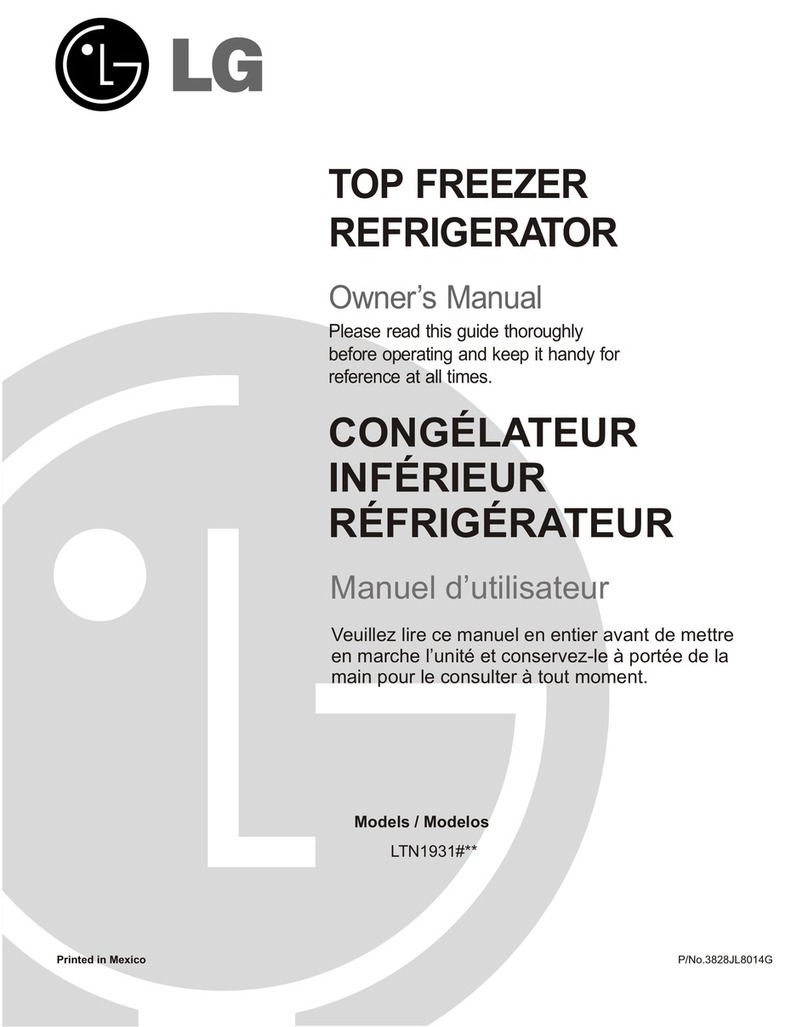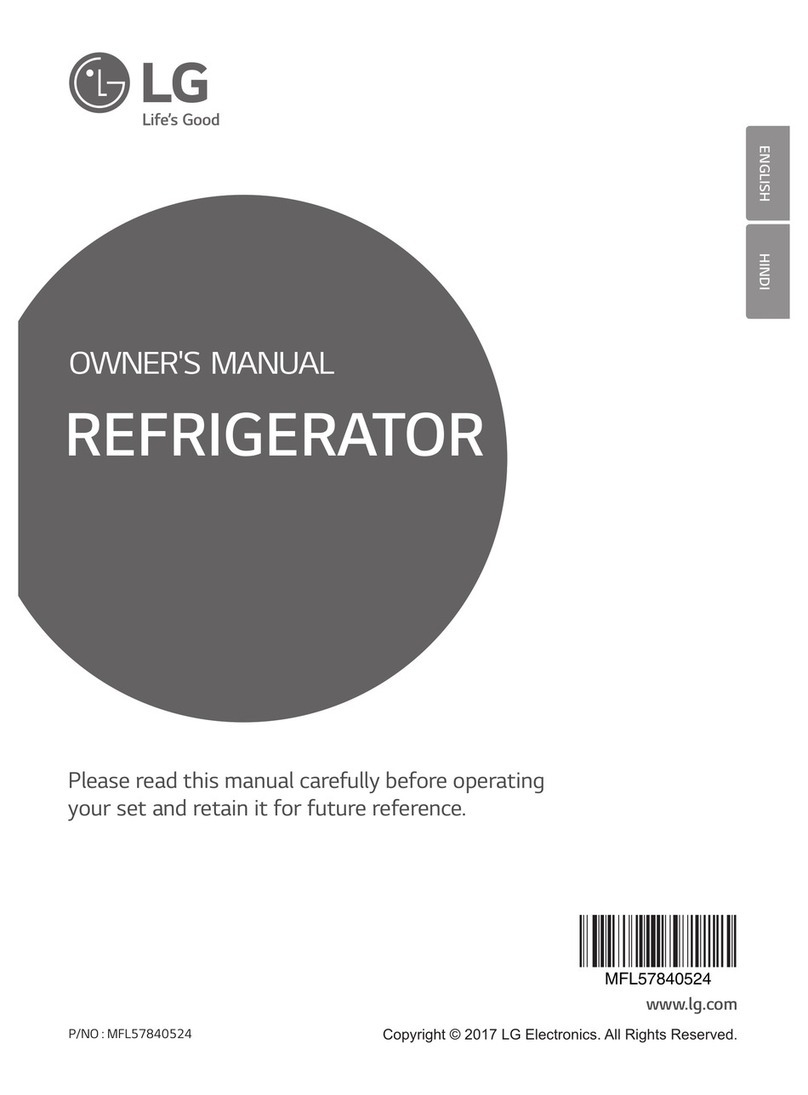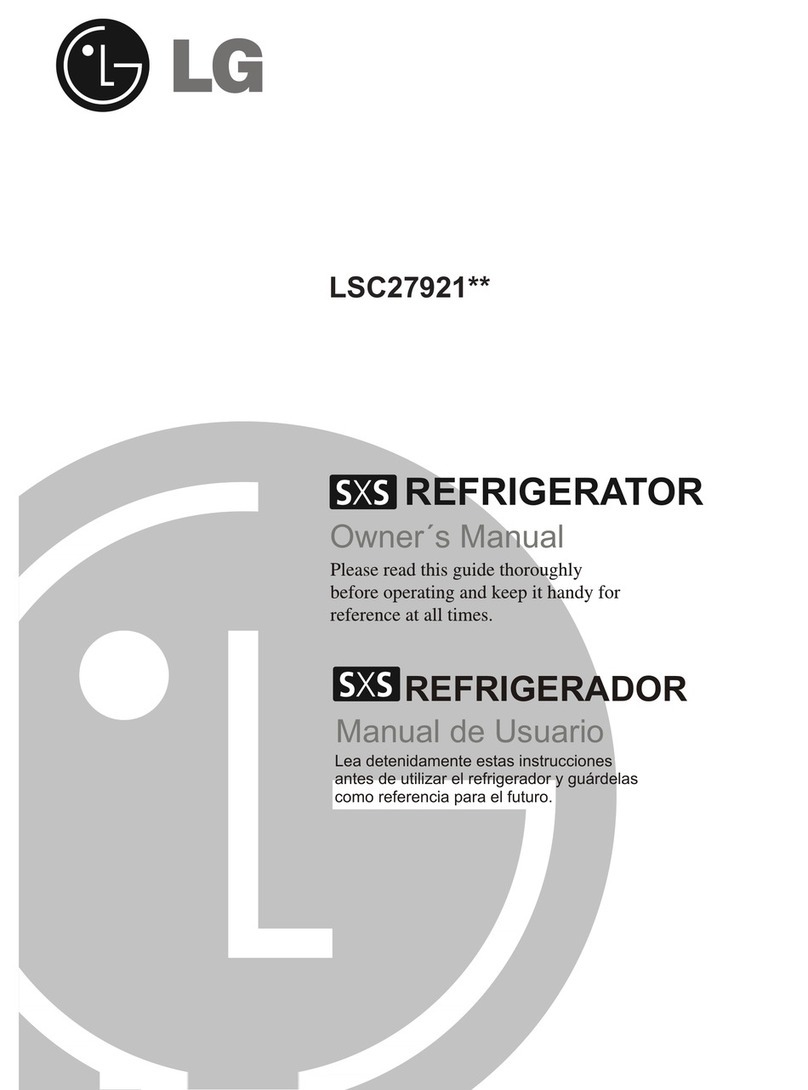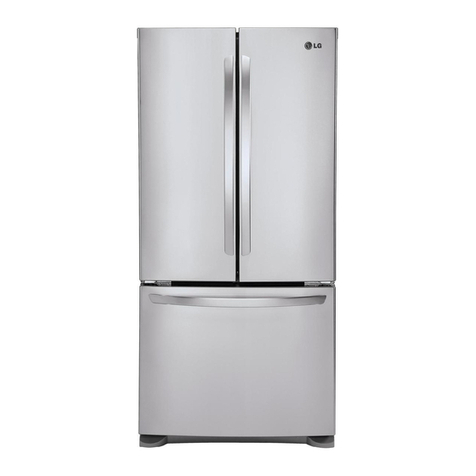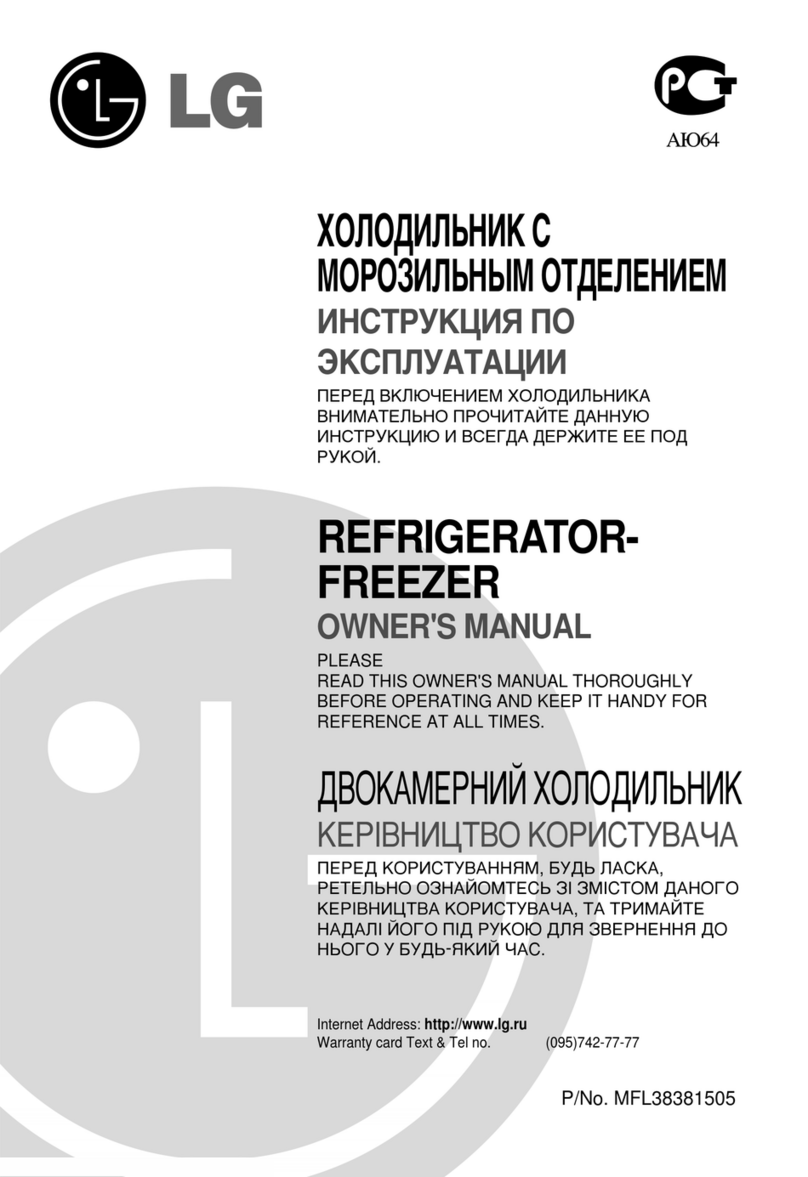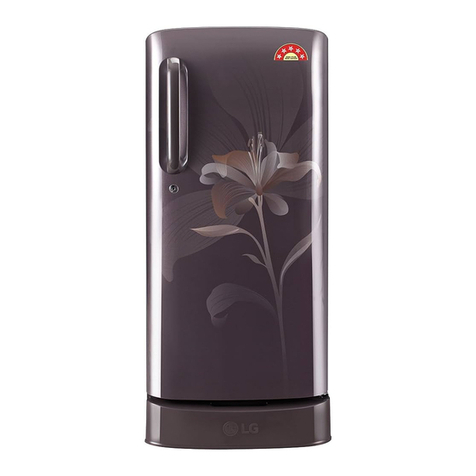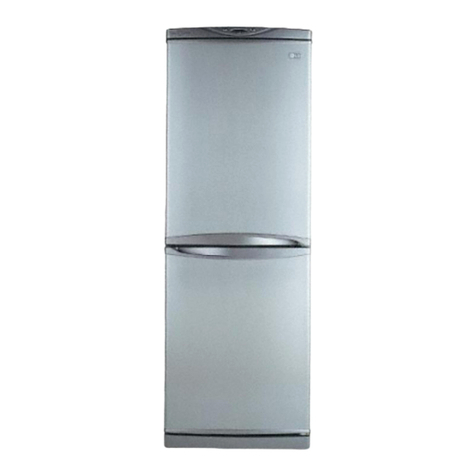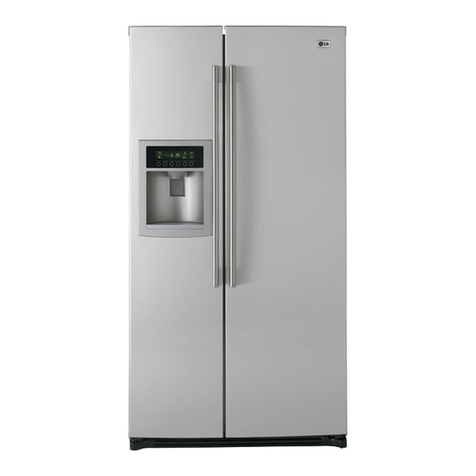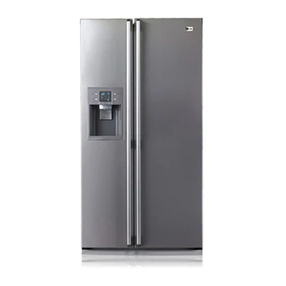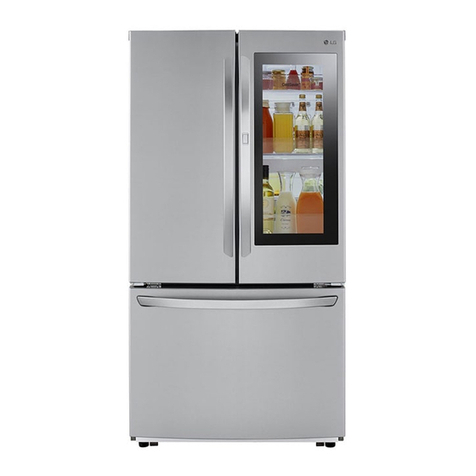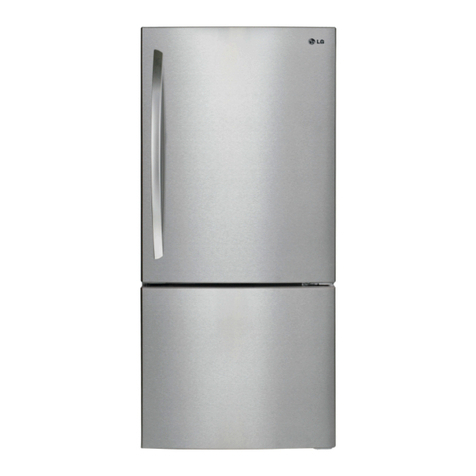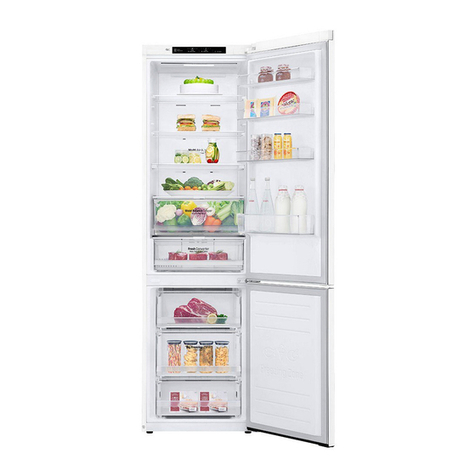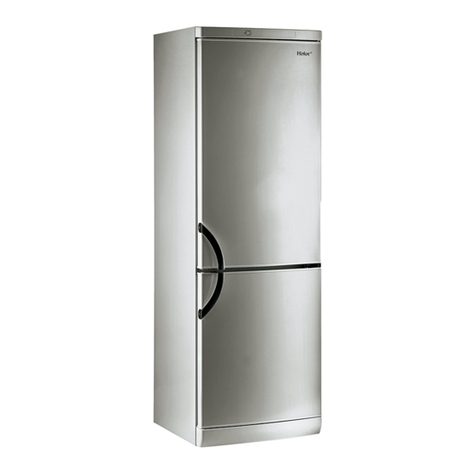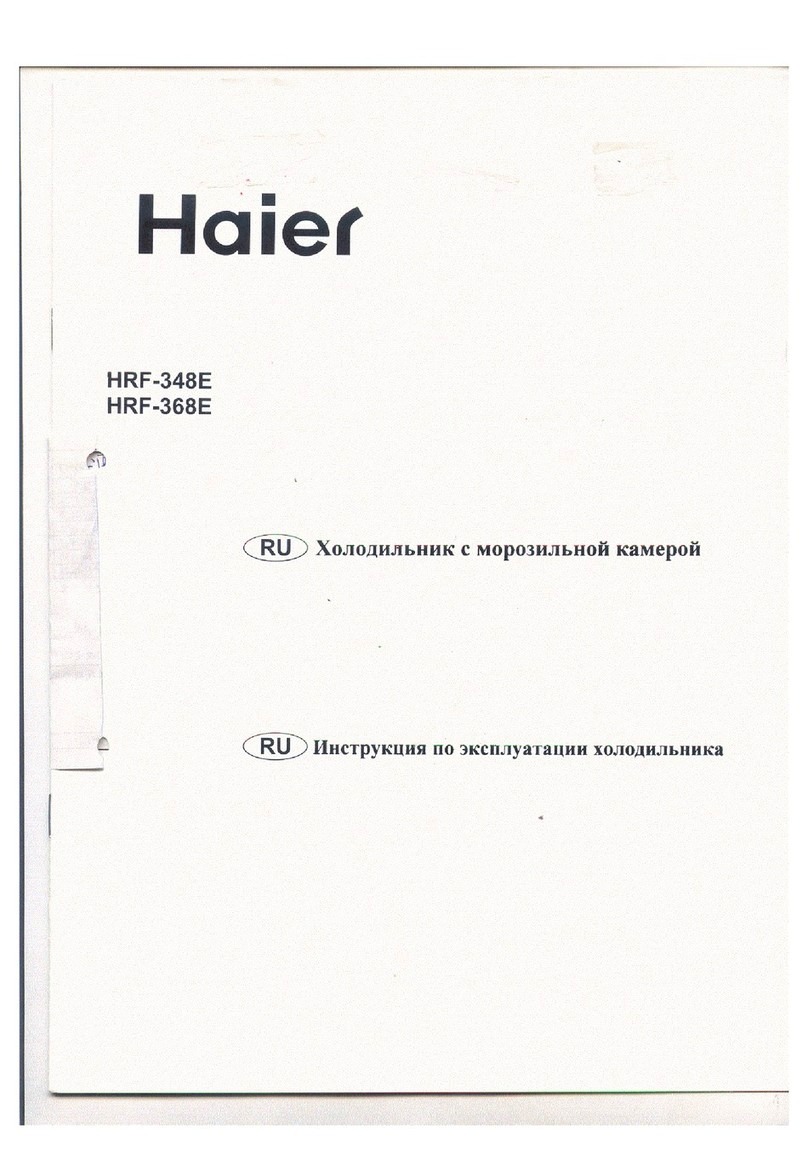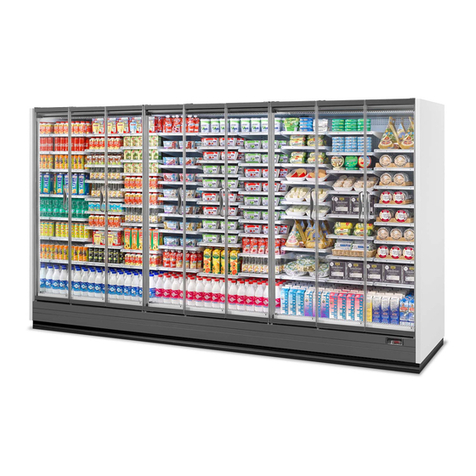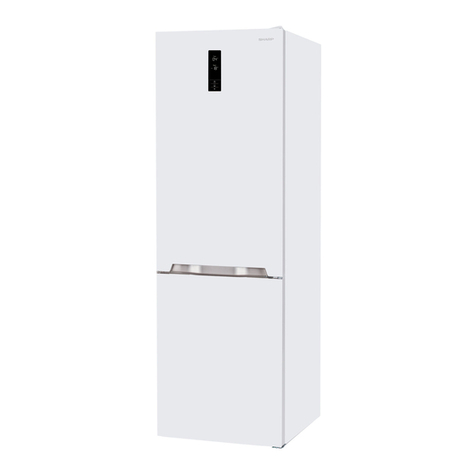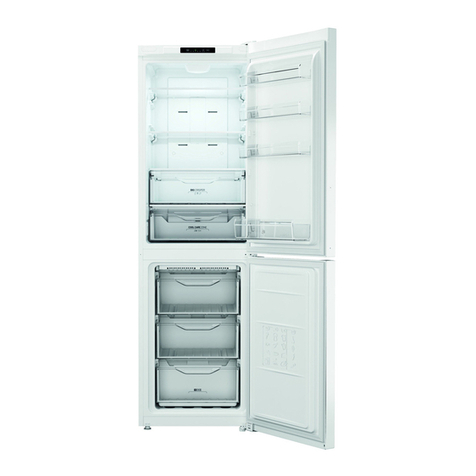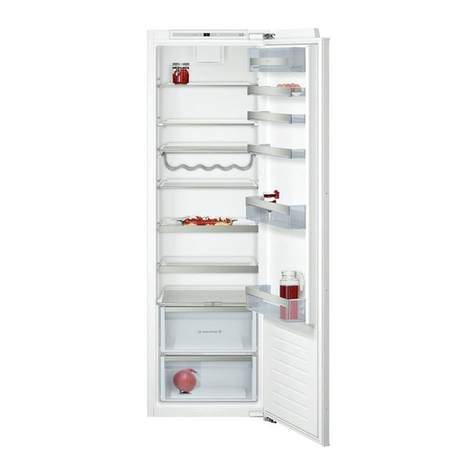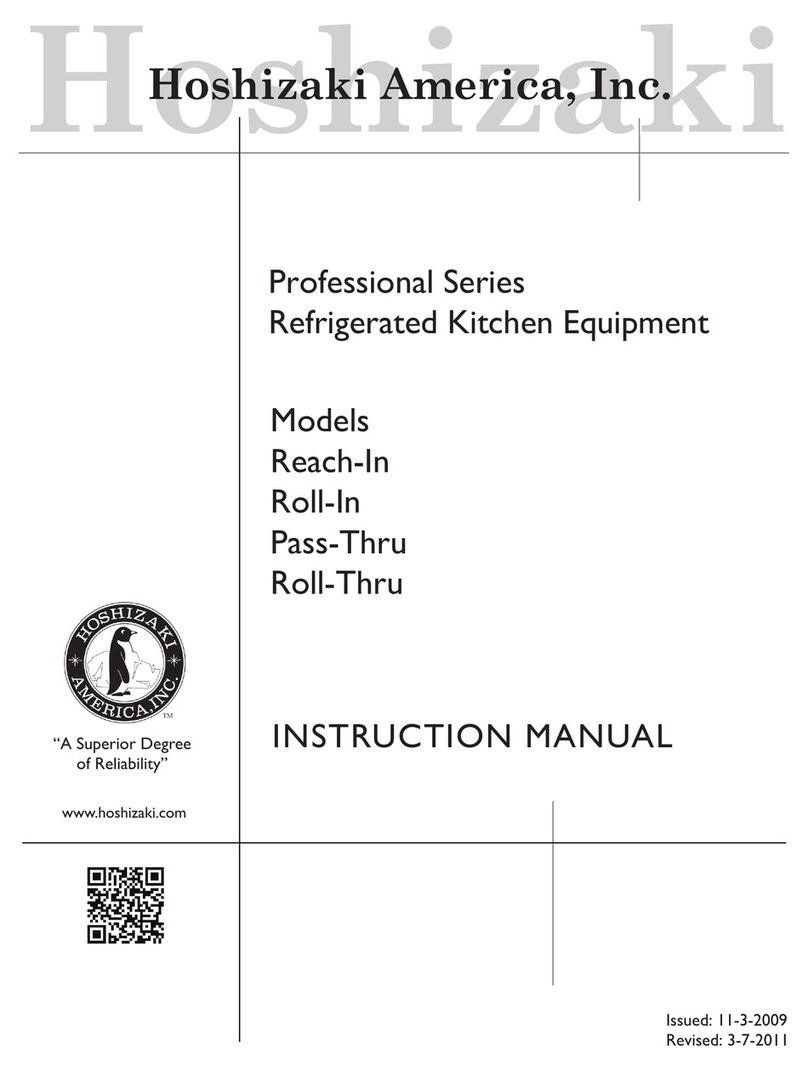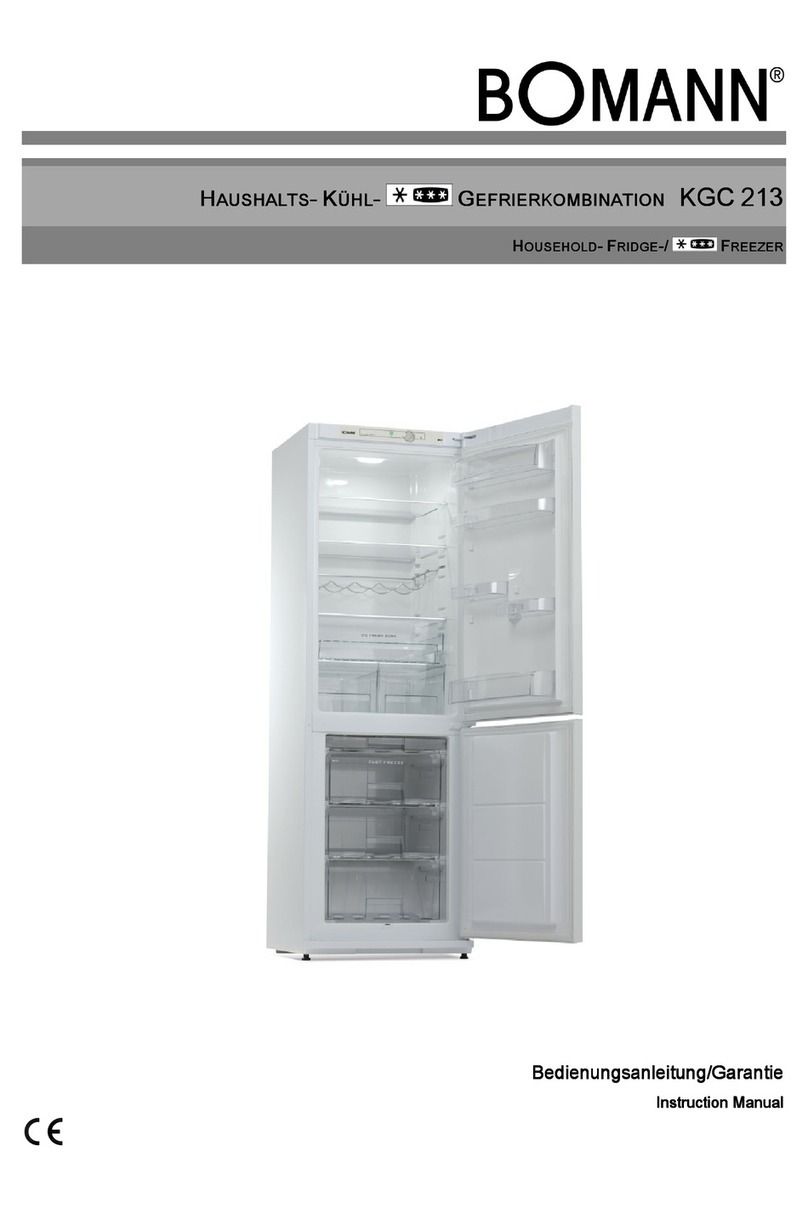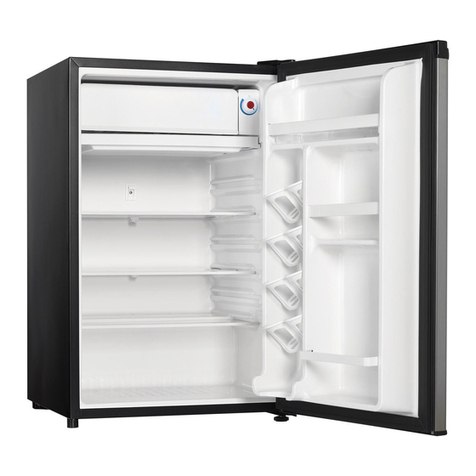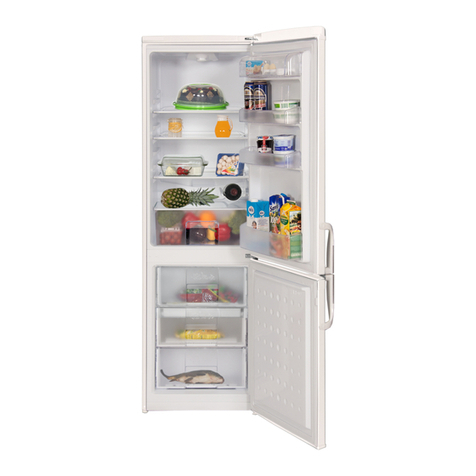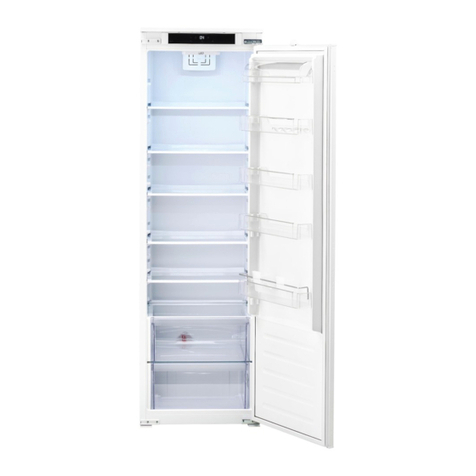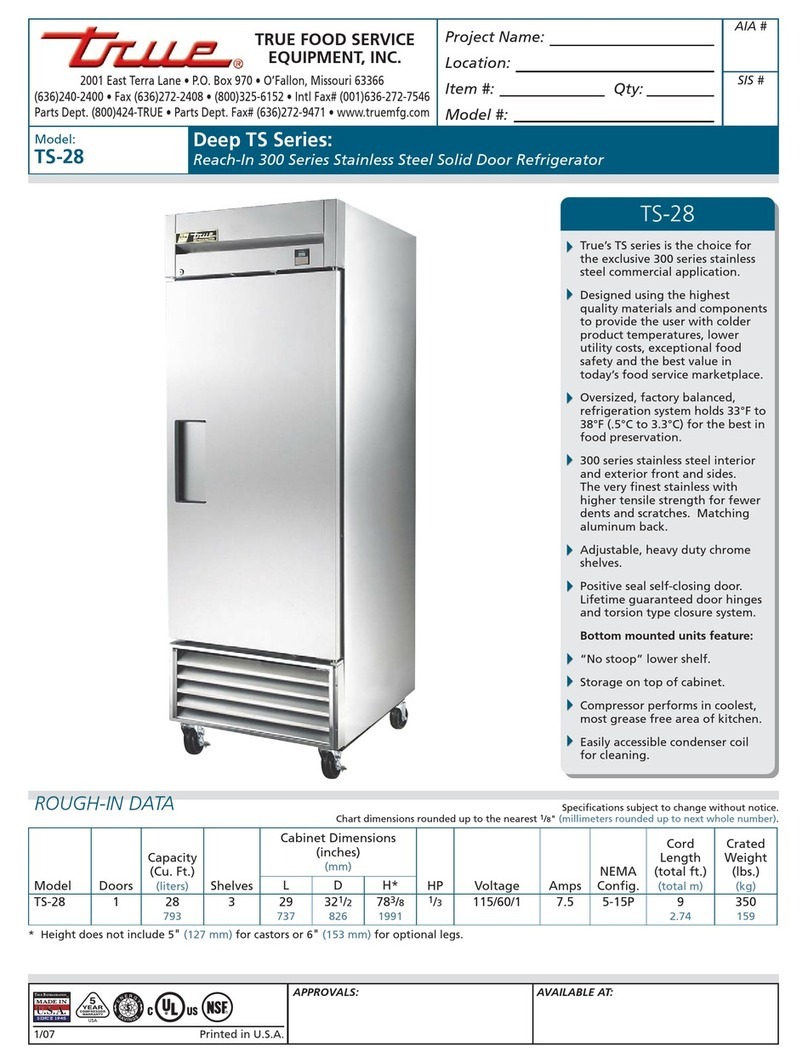
CONTENTS
- 2 -
SAFETY PRECAUTIONS ....................................................................................................................................................... 2
1. SPECIFICATIONS .............................................................................................................................................................. 3
2. PARTS IDENTIFICATION .................................................................................................................................................. 4
3. DISASSEMBLY ............................................................................................................................................................. 5-11
REMOVING AND REPLACING REFRIGERATOR DOORS ............................................................................................... 5
DOOR .............................................................................................................................................................................. 6-7
DOOR ALIGNMENT ........................................................................................................................................................... 7
LAMP .................................................................................................................................................................................. 8
MULTI DUCT ...................................................................................................................................................................... 8
MAIN PWB ........................................................................................................................................................................... 8
HOW TO REMOVE AND REINSTALL THE PULLOUT DRAWER ................................................................................ 9-10
TOP DRAWER................................................................................................................................................................... 11
BOTTOM DRAWER........................................................................................................................................................... 11
4. ADJUSTMENT ............................................................................................................................................................ 12-13
COMPRESSOR ................................................................................................................................................................ 12
TSD STARTER ................................................................................................................................................................. 12
OLP(OVERLOAD PROTECTOR) ..................................................................................................................................... 13
5. CIRCUIT DIAGRAM ......................................................................................................................................................... 14
6. TROUBLESHOOTING ................................................................................................................................................ 15-19
COMPRESSOR AND ELECTRIC COMPONENTS .......................................................................................................... 15
OTHER ELECTRICAL COMPONENTS............................................................................................................................. 16
SERVICE DIAGNOSIS CHART ........................................................................................................................................ 17
REFRIGERATION CYCLE .......................................................................................................................................... 18-19
7. OPERATION PRINCIPLE AND REPAIR METHOD OF ICEMAKER .......................................................................... 20-23
OPERATION PRINCIPLE ................................................................................................................................................. 20
ICE MAKER FUNCTIONS ........................................................................................................................................... 21-23
8. DESCRIPTION OF FUNCTION & CIRCUITS OF MICOM........................................................................................... 25-38
FUNCTION .................................................................................................................................................................. 24-28
9. PCB Picture .................................................................................................................................................................29-30
Main PCB .......................................................................................................................................................................... 29
Display PCB ...................................................................................................................................................................... 30
10. Troubleshooting with Error display ........................................................................................................................ 31-51
Freezer Sensor Error ....................................................................................................................................................31-32
Refrigerator Sensor Error ............................................................................................................................................. 33-34
Defrost Sensor Error .................................................................................................................................................... 35-36
Ice Maker Sensor Error ................................................................................................................................................ 37-38
Defrost Heater Error ..................................................................................................................................................... 39-43
Freezer Fan Error ......................................................................................................................................................... 44-46
Condenser Fan Error .................................................................................................................................................... 47-48
Communication Error(display LED off) ......................................................................................................................... 49-50
11. Troubleshooting Without Error Display ................................................................................................................. 51-58
Freezer Room Lamp does not work. .............................................................................................................................51-52
REFRIGERATOR Room LAMP does not work ............................................................................................................ 53-54
POOR COOLING in the refrigerator compartment ...................................................................................................... 55-56
OVER-COOLING in the refrigerator compartment ....................................................................................................... 57-58
12. Reference .................................................................................................................................................................. 59-61
TEST MODE and Removing TPA ......................................................................................................................................59
TEMPERATRUE CHART - FRZ AND ICING SENSOR .................................................................................................... 60
TEMPERATRUE CHART - REF AND DEF SENSOR ....................................................................................................... 61
13. EXPLODED VIEW & REPLACEMENT PARTS LIST ................................................................................................ 62-66
SAFETY PRECAUTIONS
Please read the following instructions before servicing your
refrigerator.
1. Unplug the power before handling any elctrical
componets.
2. Check the rated current, voltage, and capacity.
3. Take caution not to get water near any electrical
components.
4. Use exact replacement parts.
5. Remove any objects from the top prior to tilting the
product.
